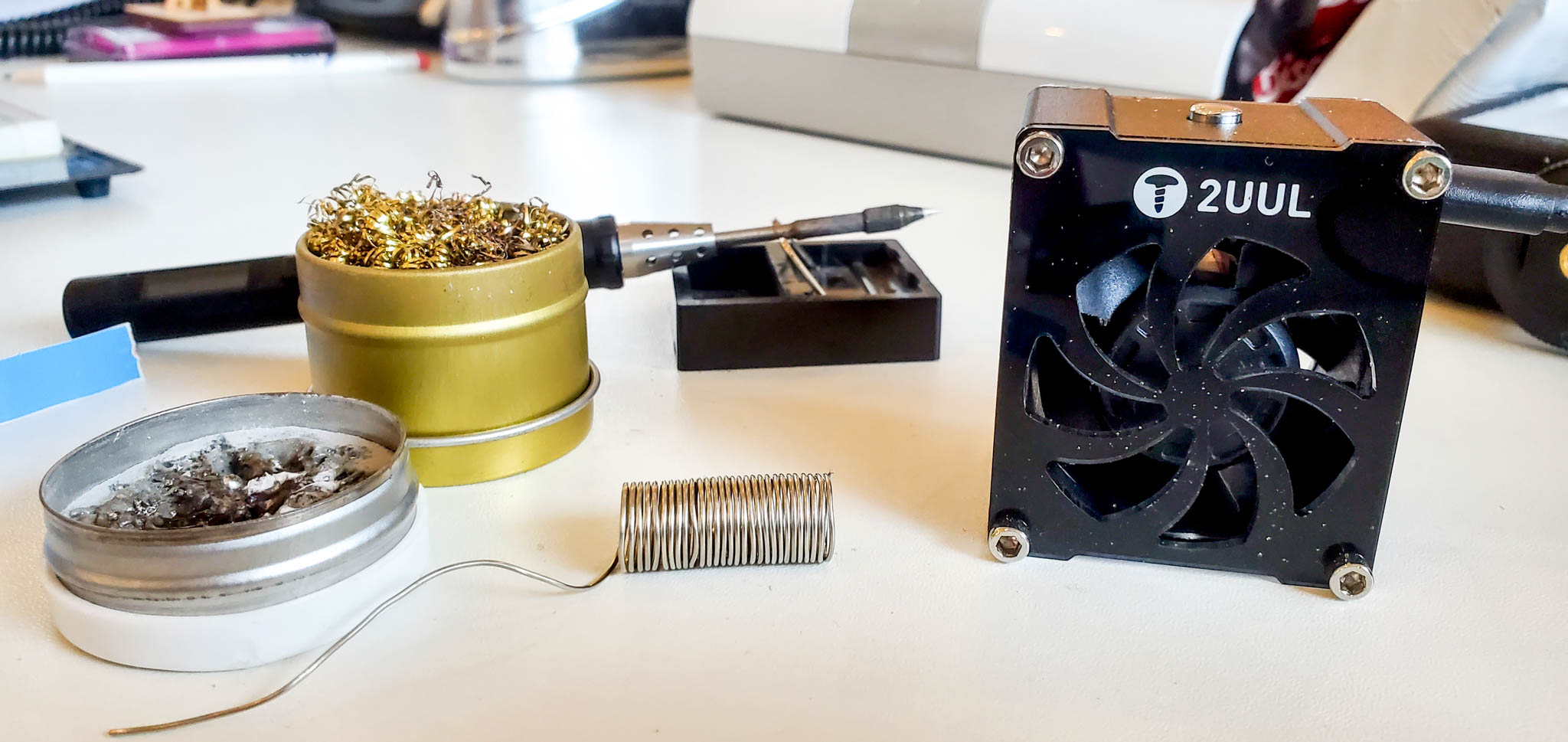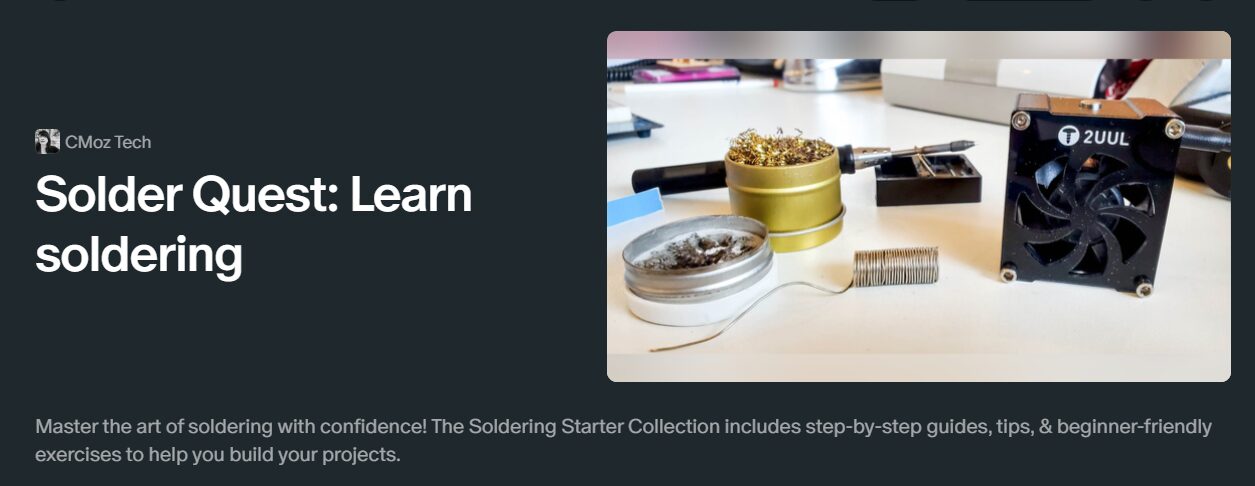Soldering Techniques
This free introductory soldering course on the Tinker Tailor website aims to equip absolute beginners with the fundamental knowledge and a successful first soldering experience, covering essential tools, safety precautions, and simple soldering exercises (wire-to-wire, protoboard). We encourage further learning by later enrolling in the more in-depth topics and slower pace offered in the premium soldering course available on Patreon (soldering practice with microcontrollers, making your own clips and connectors, and other tips and tricks).
By providing a helpful start, the course intends to inspire you to develop your soldering skills for electronics and wearable tech projects.

Course Details
Instructor
Christine Farion
Level
Duration
4.5 Hours of practice 😊
Type
The course opens May 5th 2025 : https://www.patreon.com/cmoz
Course Content
Welcome and What is Soldering?
Essential Tools for Beginners (Keep it Simple!)
We have a brief look at the essentials to get you started.
Safety First!
Your first solder joint
Your First Solder Joint: Wire to Wire | Proto board with resistors for practice
Quick Tips for Success
Next Steps: Unlock More Soldering Secrets!
Motivation for taking this course
Soldering has a huge connection to wearable tech projects. Having soldering skills will enable you to create more complex and durable wearable projects, beyond just sewing with conductive thread.
Patreon
This course will launch for FREE on our Patreon. Just sign up to be a free member to gain access. FREE launch is on May 5th!

Here’s a refined version that entices curiosity and highlights the value of learning further:
Ready to take your soldering skills to the next level? Explore the full, in-depth soldering course on my Patreon page—designed for makers who are eager to master advanced techniques and refine their craft.
As a Patreon supporter, you’ll unlock:
- Comprehensive tutorials that go beyond the basics.
- Exclusive content and insider discussions about components.
- Special discounts on Tinker Tailor products to fuel your projects.
Your support doesn’t just grant you access to these benefits—it powers more exciting tutorials, innovative prototypes, and everything else that keeps Tinker Tailor thriving. Together, we’ll keep building, creating, and learning.
What’s Included
45 minutes of Video Instruction
Written Information
Checklist of tools
Requirements
- A Positive Attitude and Patience: Learning a new skill takes time and practice. A willingness to try and not be discouraged by initial attempts is very important.
- Access to the Course Materials: This would include viewing the course content on the Tinker Tailor website (text, images, and videos, if applicable).
- A Basic Soldering Iron: used for a very simple demonstration and to try a practice exercise afterward. Pencil Soldering Irons are recommended for a beginner, I still use one at times – these connect directly into a wall socket and don’t have an adjustable temperature.
- Solder: Similarly, having a small amount of appropriate solder (e.g., lead-free, rosin-core) available is necessary if you choose to engage with a practice exercise.
- A Sponge (or damp cloth): For cleaning the soldering iron tip, usually with a holder for the solder iron
- Safety Glasses: the importance of eye protection, even for a brief practice.
- A Well-Ventilated Area: Understanding the need for this is crucial for safety.
- Pieces of Wire to Practice On (Optional but Recommended for Hands-On Learning), or a protoboard / resistors.
